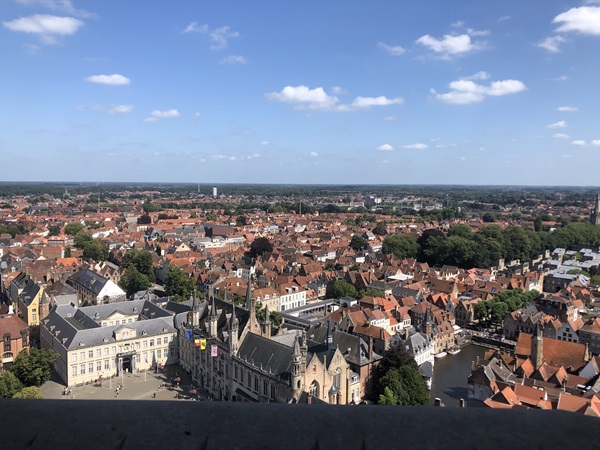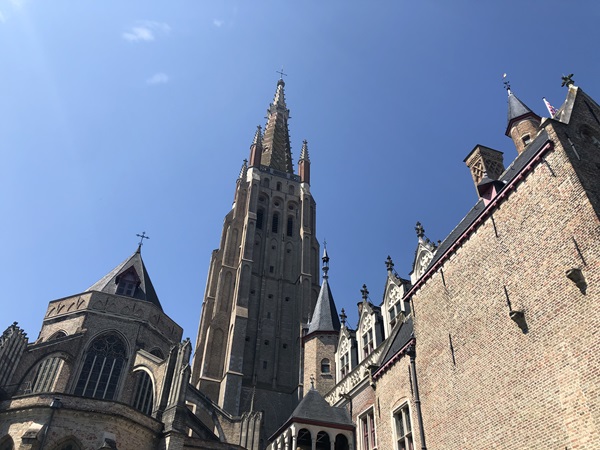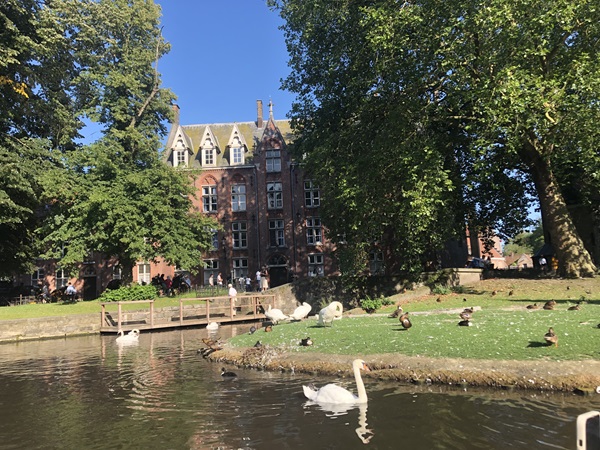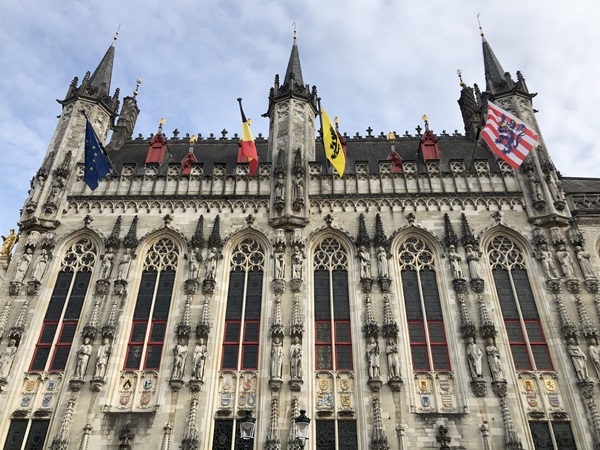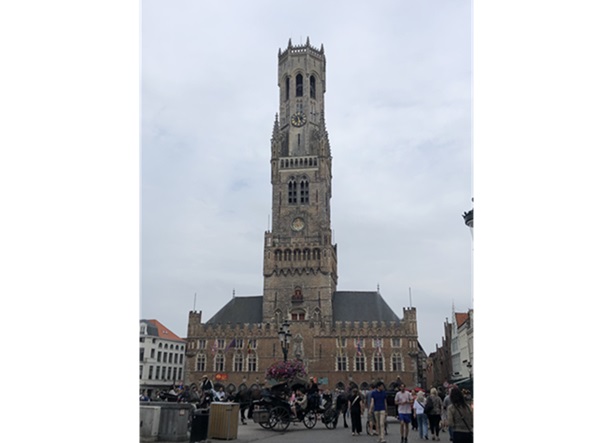 Belfry tower in Bruges, Belgium;
Credit: Otilia Dragan/Chronicle.lu
Belfry tower in Bruges, Belgium;
Credit: Otilia Dragan/Chronicle.lu
Trying to decide on a quick and not-too-far-off spontaneous getaway destination, the choice fell on the Belgian town of Bruges this year. Sometimes nicknamed the “Venice of the North”, Bruges boasts 12km of picturesque canals and a historic city centre distinguished as a UNESCO World Heritage Site.
Bruges is one of Europe’s best-preserved medieval towns, as well as the largest city in the province of West Flanders in the Flemish Region of Belgium. I did not pick this destination quite at random, but because I watched the film In Bruges a while ago. The scenic sights, intriguing museums, churches and quaint streets of Bruges lured me in from the small screen and I decided to explore it with my partner this summer during a three-day getaway.
In Bruges is a 2008 black comedy-drama crime thriller, marking the feature-length debut of director and writer Martin McDonagh. The film, starring Colin Farrell and Brendan Gleeson as two Irish hitmen hiding in Bruges, showcases McDonagh's unique blend of dark (at times problematic) humour and poignant drama. Ray, the younger of the two hitmen is grappling with a dark secret and cannot bear the winter “holiday” he and his older counterpart Ken, were unexpectedly sent on in Bruges. Ken attempts to enjoy the tourist and cultural attractions with a bored Ray who soon falls for a mysterious Belgian woman (who turns out to potentially be a drug dealer...). Many dramatic turns of events, fights and misunderstandings lead them on wild (and bloody) chases with the beautiful Bruges as a backdrop.
The film gained significant attention as the opening night film of the 2008 Sundance Film Festival. Farrell's performance won him a Golden Globe, and McDonagh's script earned him a BAFTA Award for Best Original Screenplay, as well as an Academy Award nomination. In Bruges showcases a number of the city’s historical gems, some of which I was able to spot myself.
The Groeningemuseum, for instance, is an art museum Ray and Ken visit, where Ray appreciates Hieronymus Bosch's dark Last Judgment triptych painting. Created after 1486, the work features a hellscape, where the wicked are punished in various gruesome ways.
The Minnewater Bridge, or the Lake of Love bridge, is where gangster boss Harry arrives in Bruges near the film's end. The picturesque bridge and its surrounding park are regarded as one of Bruges' most romantic locations.
The terrace where we had some traditional Belgian waffles with a view of the canal, is the Relais Bourgondisch Cruyce Hotel, where Ray and Ken awkwardly share a room shortly before Christmas, so the atmosphere was very different.
Another film location and imposing Gothic-style Roman Catholic church, the Church of Our Lady is partly surprisingly contemporary on the inside, with various modern artworks alongside historical paintings and statues. The church also boasts a wealth of art treasures, with Michelangelo’s world-famous white marble Madonna and Child as its highlight. The church is also home to 13th and 14th-century painted crypts and the 15th and 16th-century tombs of Charles the Bold, the last Valois Duke of Burgundy and that of his daughter, the Duchess Mary of Burgundy.
Much to my surprise, the Basilica of the Holy Blood, featured in a scene in the film, looked very different in real life. This is because the Jerusalem Church stood in for the location, for which the filmmakers did not obtain a permit. The church houses a relic of the Holy Blood (the Blood of Christ) allegedly collected by Joseph of Arimathea and brought from the Holy Land by Thierry of Alsace, Count of Flanders.
The Bruges Market Square, the Belfry and the Breidelstraat were prominent locations in the film, and well worth seeing in real life. Ken climbed the Belfry tower's narrow steps for the view, which we did as well. The tower has 366 stairs and is a UNESCO World Heritage-protected site. It is perhaps the most striking tower in Bruges, measuring 83 metres and dating back to the 13th century. The carillon sounds automatically before the quarter hour strikes via the largest, oldest surviving plug-in drum. The melody is changed every two years.
We also opted for a boat tour around the canals (significantly busier than the film version, where the two hitmen share a little boat with the tour guide only). According to the tour guide, boats in Bruges have (luckily!) been replaced by electric boats since 2025, and there are around 20 boats touring the canals almost daily.
A fair warning, Bruges is a highly popular tourist attraction, and a visit during August may mean constantly walking through relentless crowds. Nevertheless, booking tickets in advance and planning ahead a little is well worth it. In the end, we did not struggle quite as much as we thought, considering it was a hot period at the beginning of August. Bruges is home to many restaurants and chip shops, chocolate and waffle stores and it is seasoned to tourism. In fact, the town boasts around 111 hotels and an impressive 47 chocolate shops, to be precise.
It is a highly walkable city, and only around 11km, or 25-30 min car ride from the Belgian coast. Nevertheless, it should be noted that parking in the town can be quite expensive and should be booked in advance to reduce the stress and hassle before and during a holiday in Bruges.

